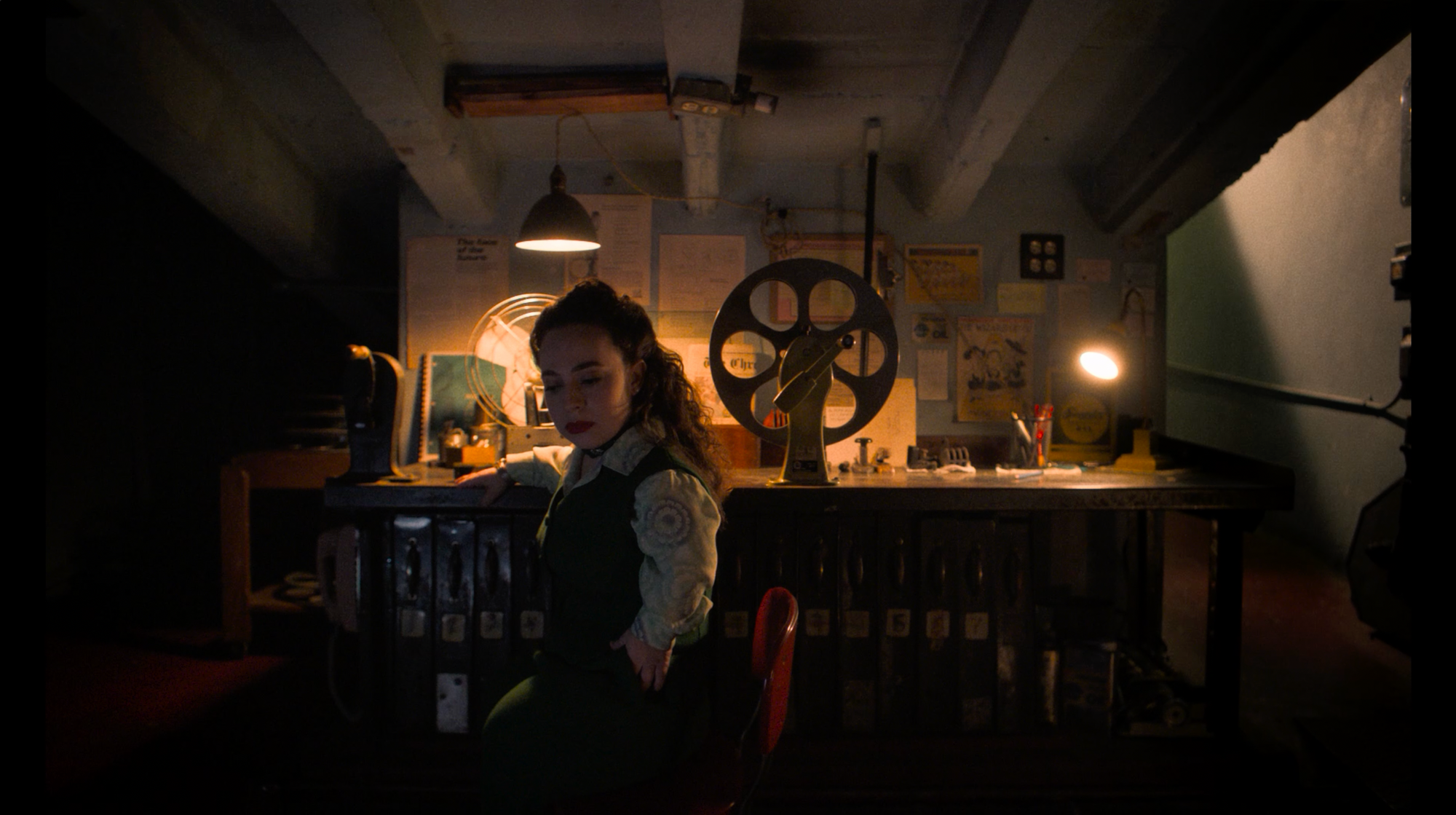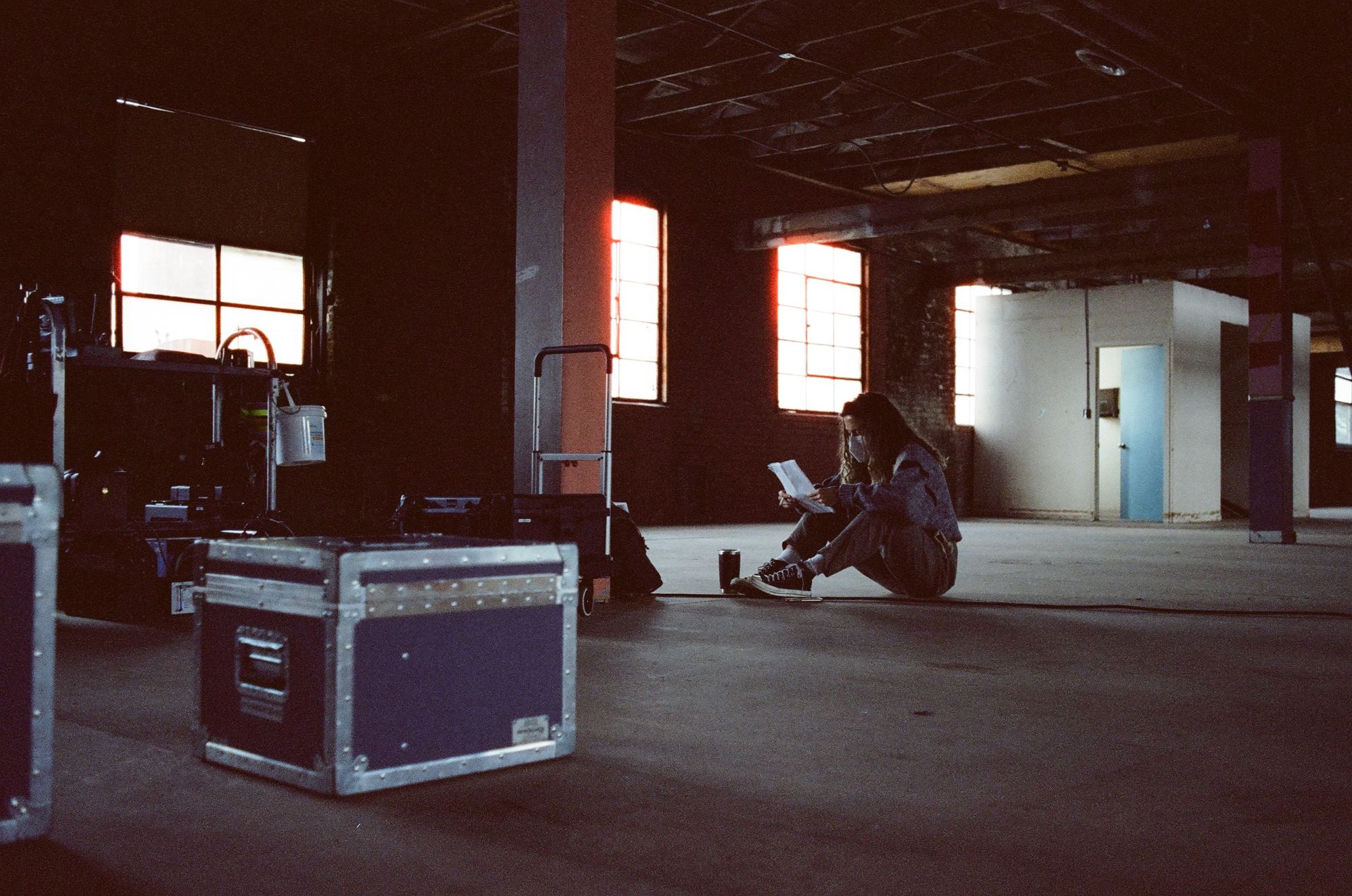
Script to Screen: How I Taught Myself to Direct
Seeing Diane Arbus began as a short story about an insomniac with dwarfism. This nameless woman manages her sobriety by people-watching in a dive bar until one night, the renowned voyeur photographer Diane Arbus recognizes her.
The story won Grand Prize in Francis Ford Coppola’s Zoetrope: All-Story magazine, but I was frustrated it never became anything else. I tried adapting it into a pop-up or picture book for grown-ups, but lacked the skills to create the art or find an agent.
Years later, amidst the early days of COVID lockdown, I adapted the story into a screenplay. I wrote it as grand and sweeping as possible—in the unlikely case it ever got made, it wouldn’t be me directing or producing. The only allegiance I felt was to the characters. I modified “Hildy” (and gave her my grandmother’s name) so we’d meet her in a thematically-appropriate movie palace instead of a dive bar.
And Diane—she was a real person, survived by her daughters and a very protective estate. I copied sentences she had said or written to pick up the flow of her dialogue and only wrote in actions that Arbus’s associates said she had done, like speaking in a girlish voice or flirting with her eyes.
The script got a positive response from the kind friends I shared it with. A few encouraged me to make the film. “You can do it! Go. Try.”
But I was only a writer, so I started looking for a director. Someone from an underrepresented background. Someone who already knew and cared for Arbus. A storyteller who could capture the grand, old cinema of a movie palace and contrast it with Arbus’s signature style across multiple timelines.
I collected every image that illustrated the colors, tones, and rules I saw in my head. I studied lookbooks from Nicole Kassel and Robert Eggers to construct my own—all with the intention of convincing a director to care as much as I did about this story, these characters, the details of Diane’s body language and Hildy’s camera placement.
It turns out, 1) screenwriters must give up creative control to a director, 2) finding an accomplished director to work for free on a short film not of their making is impossible, and 3) no one cared about my script more than me.
Frankly, I wanted to direct. I’d produced enough photo and video content to trust my instincts and know how to work with a crew. But to actually direct—something scripted no less—felt like a sham. People went to school for that. Or they had climbed the proverbial ladder to earn it.
So, no on-set experience, two babies, no childcare, and the entire industry on pandemic-related shutdown. I had nothing to lose! I also had no one to tell me otherwise. My executive producer is the first person I share every piece of writing with, my producer is a former colleague who directs her own short films, I’d worked with the cinematographer years prior on a PSA she shot, and the production designer had been in my book club for almost a decade.
I leaned on these friends heavily. They had experience, talent, and connections far beyond my own, so I scoured articles on NoFilmSchool and IndieWire to catch up on their language and craft. What I couldn’t learn online or through a friend, I cold called or emailed strangers to ask. What’s a location rental cost? How do I find a period-specific, accessibility-savvy costume designer? Where do actors come from? I didn’t need to know the answers, just a clear vision and a succinct way to communicate it.
I did my own casting through the easy and free services at Breakdown Express. I followed a long chain of referrals until I finally found a brilliant costumer. I asked the President of Little People of America to review my script and discuss my production plan. I scouted 18 movie theaters and four warehouses before finding the perfect locations. I made miniature lookbooks for every element we would see on screen—from set decoration to special effects—and had weekly phone calls with my production team to make sure everything was moving forward.
But how to pay for it? This development process happened in the second half of 2020, when there were many more important causes for friends to donate their money. Fundraising is so difficult, both logistically and emotionally. I felt more confident on both counts when I landed a fiscal sponsorship with Film Independent. Donations are 100% tax-deductible through FI, which collects a 7% fee in exchange for sharing their nonprofit status and highly regarded name. (I found this to be very reasonable considering how much more money I raised due to the tax incentive.)
There are grants and contests, too, but those are harder to benefit from. Truly, the best return for a submission fee has been Film Pipeline—and I didn’t even win their contest! Look for organizations with engaged communities. Anyone will take your money, but you shouldn’t always have to win in order to feel empowered about your work.
Friends shared budgets from their own projects so I could start plugging numbers into my own. I saved money everywhere I could—asking my dad to pick up talent, having my sister deliver lunch, mending and steaming costumes myself—so I’d have every dollar possible when the unforeseeable occurred. I was honest about my budget and immediate with my payments. And the vendors were incredibly generous with discounts and freebies when they learned this was a short, indie, first-time film. Production insurance is an absolute must if you’ll be doing any kind of rental (gear, locations, props) but won’t cover everything. We lost a $1,400 microphone transmitter to a toilet, which was tragically below my $5,000 deductible and painfully above my $0 emergency budget.
Shadowing another director on-set wasn’t an option due to COVID, so I learned how to direct actors through books by Bethany Rooney and Mary Lou Belli, David Mamet, and Judith Weston. We rehearsed, planned, prepared, and then let it all go when the cameras started rolling. Which, you may already know, is quite a feat amidst a pandemic.
I postponed filming twice due to regional spikes in COVID. When we finally did film in March 2021, it was under the Short Project Agreement from SAG-AFTRA and their extensive COVID Prevention Protocols. Because we were a small, short, and local production, I was able to snag a lot of free PPE and didn’t have to quarantine in a hotel. The testing was a hurdle for a lot of crew and vaccinations weren’t widely available yet, but somehow everything worked out. It wasn’t easy, and I’d really like to make my next film without a face mask, but we got it done.

The cinematographer and I prepared extensively with tech scouts, shot lists, thumbnails, storyboards, scene sheets, camera maps, and long conversations about what feeling each shot was meant to evoke. Even with that planning, we cut or consolidated shots on the fly. We found happy accidents that worked better than our plans and mourned the lost shots we didn’t have time to shoot.
Working with the cinematographer is like grocery shopping—get the best stuff you can. But working with the editor is like cooking, and now it’s time to eat. Again, because of COVID, I couldn’t sit with my editor as she cut the first pass of our film. She had notes on which takes I liked best, and my color-coded script, but there was a real magic in seeing the first cut with fresh eyes, just as she had interpreted my footage with her own fresh eyes. She solved problems and made connections I couldn’t have imagined.
Simultaneously, the visual effects supervisor handled the trick shots that we couldn’t achieve through practical effects, and I reached out to a composer overseas. Daniel Pioro is a ridiculously talented violin soloist who hadn’t composed for film before, which was perfect for a director who had never directed before. I hoped I could talk him into maybe recording some improvised bits on his phone, in his slippers, with a leaf blower going outside (his stuff is that good). I’m still in awe of what he delivered instead: this sweeping, swooning, haunting 19-minute score recorded with a live ensemble. It’s the spine of the film, and again, began with a cold email.
That score was handed off to a sound designer (also a family friend) who built the auditory yin to my visual yang. Good sound design is worth every penny. Save your money elsewhere and find the very best person you can afford. Lastly, I did my digital intermediate and color grade at Light Iron, a prestige finishing house that is refreshingly and earnestly invested in helping upcoming filmmakers finish their projects.
So, what did we learn? Well, I learned my final budget was half my initial estimate (which led to some eleventh-hour emergency fundraising). I learned I didn’t need to “know someone” for everything, I just needed to keep calling until I found someone who I wanted to know. I also didn’t need to know how the camera worked, where the best prop house was, how the Post Pipeline was set up (though that all could have been useful) … I only needed to communicate clearly, consistently, and concisely what was already in my head. And I learned that when there was nothing in my head, I should ask my smart, talented friends what was in their heads.
There’s a reason people love making movies: the ones who work on them are creative, interesting, dedicated, and kind. I hope you have friends who encourage you to manifest your work.
Here, just in case:
You can do it. Go. Try.
*Feature Image: Katrina Kemp as Hildy / photo by Favienne Howsepian